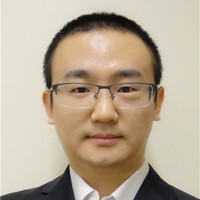Deputy Director of the Centre for Bio-inspired Technology, Imperial College of London
Co-Investigator of FORTE
Biography
Timothy Constandinou originally trained in Electronic Engineering at Imperial College London. He is currently Deputy Director of the Centre for Bio-Inspired Technology and leads the Next Generation Neural Interfaces (NGNI) lab. His group utilises integrated circuit and microsystem technologies to create new research tools for neuroscience and neuroprosthetic devices. He has projects on brain machine interfaces, epilepsy, sleep, as well as tackling fundamental challenges in electronic and implantable technology. Within IEEE he serves on the CAS Society Board of Governors, BRAIN Initiative Steering Committee and BioCAS/Sensory Systems Technical Committees. He co-chairs the Royal Society emerging technologies group in Neural Interface Ecosystems.
Research
The key overarching aim is to utilise the capability of (currently) mainstream CMOS microelectronics to enable efficient and effective ReRAM/CMOS integration. This technology platform will then provide new opportunities for integrated circuit design by exploiting the inclusion of new nano-scale memory primitives. Our research here is firstly supporting the technology integration through customisation of electronic design automation (EDA) CAD to include ReRAM capability within design tools (e.g. modelling, schematic entry, simulation, layout design, physical verification). These will then be used to design basic building blocks that contain ReRAM devices (e.g. memory elements, read/write instrumentation, readout circuits) in addition to macros and tools for generating memory arrays. The availability of an end-to-end design methodology will then allow us to exploit the technology for new circuits and applications. From a circuit perspective we will investigate continuous-time discrete value processing based on oscillator structures or level-crossing converters. This allows “analogue” processing with high dynamic range in a highly integrated manner. From an applications perspective, our work will target two specific areas: novel research tools for neuroscience, and active implantable medical device. Here, the availability of “above circuit”, back-end integrated ReRAM will enable hybrid/distributed processing/memory architectures, providing an order of magnitude improvement in both power consumption and integration density.







